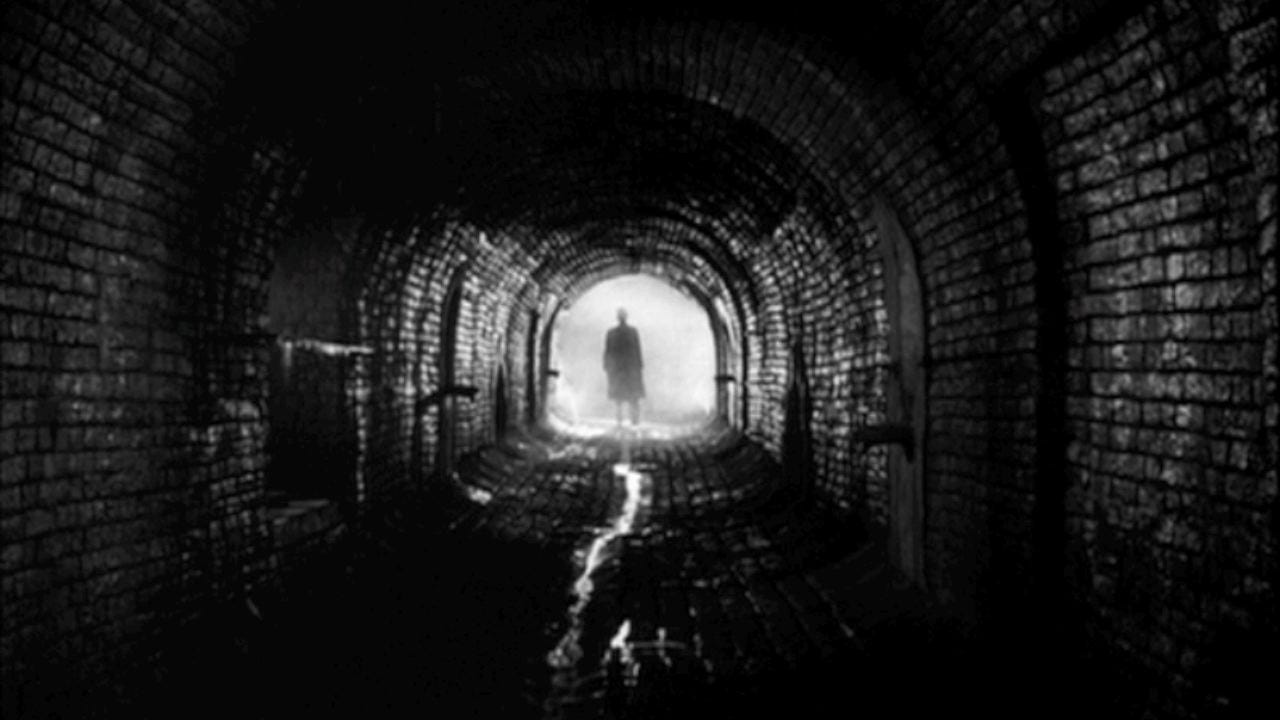
(Please note: if you have not watched The Third Man, this blog will have spoilers)
The purpose of this blog is to talk about how the film The Third Man (1949) can help you with your creations in New Orleans this January during the Noir: the Sordid Chronicles of Shady Characters workshop. (Please note: film times are based on viewing The Criterion Collection's 1999 dvd release).
The film is based on a screenplay (later turned into a novella) by Graham Greene. Greene did his research in Vienna where he learned of the sewers and of the active blackmarket in post-WWII Austria.
Carol Reed, who produced and directed the film, was working on his 22nd film so he was a seasoned veteran having done the film noir Odd Man Out (1947) and The Fallen Idol (1948), which was also based on a Graham Greene short story. Reed teamed with cinematographer Robert Krasker whose techniques using light and water turned the night time in Vienna into a film noir heaven.
So let's talk about the use of lights and shadows. If you took Michael's Why Art History Doesn't Suck: Surrealism on-line workshop, you heard all about Giorgio de Chirico's painting Mystery and Melancholy of a Street (1914).

There were a number of times I saw this painting's technique of menace, created by the unknown source of the top shadow in this painting, within the film.
The three points are

24 minutes into the film, Holly, while interviewing the porter, looks out the window into the streets of Vienna sees a similar view as in de Chirico's painting (above);
48 minutes there is a shot of the accusing boy in the streets that is reminiscent of the little girl above but a reversal--the child is the threat (not pictured here);

90 minutes into the movie the chilling upper shadow in this painting is replicated in the film and is revealed to be the eerie balloon man (above).
Michael will decide if we are going to do backdrops or sets for our characters, but if we do--these types of film noir shadows could help you add depth and emotion to your backdrop.
Throughout our study of film noir we are going to see lighting that looks like it was shot through a partially opened set of blinds:
Back light is used extensively by Krasker throughout the movie.

This might be something to remember when painting your characters.
Did you notice all the hats? Hats were big in the 1940s and 1950s and might be something that could add to your character. I noticed in even the Anna Schmidt character played by the Italian actress Alida Valli wore a pretty cool chapeau.
It is interesting that this film is about the resulting consequences of Germany's war on Europe. Ironically, this film is influence by German Expressionism, as are many film noir.
We see it in this film in two ways. We have already talked about the use of shadows which was influence by German Expressionism.
Nosferatu (F.W. Murnau, 1922

The Third Man, 1949
The second thing brought over from German Expressionism is weird camera angles and distortion within the set.
The Cabinet of Dr. Caligari (Robert Wiene, 1920)


The best use of an unusual angle I thought was when Anna and Holly are fleeing the accusation of murder after the death of the porter.

How could the idea of an unusual angle add flavor to our characters?
One of the real keys to any film noir is, "what makes the character tick?" I think that will also instill something into the characters we make. For me the whole film deals with this but the penultimate moment for emotion on the face is watching Orson Welles in the ferris wheel dissembling to his "best" friend Holly.
The last thing I want to talk about is the scene in Dr. Winkel's home where he is surrounded by all his religious iconography. Not sure how that might relate to our project but I found my assemblage antenna was up during that scene.
So, I hope you enjoyed The Third Man as a film noir. I also hope it helped you think about your project for New Orleans.
For our next film noir, I am going to pick up the suggestion of Karyn Bunting and suggest we all watch Sunset Boulevard. If one of our major interests is what motivates our characters, why not take the advice of a dead guy?
I will close out with, Mr. deMeng, this character is ready for her close-up.




Thank you for doing all of this research and insite. I love this. I really want to make little men’s hats like they wore in the 1940s. I looked everywhere I can think of but found nothing. Anyone have any ideas? I want to practice before NOLA
ReplyDelete